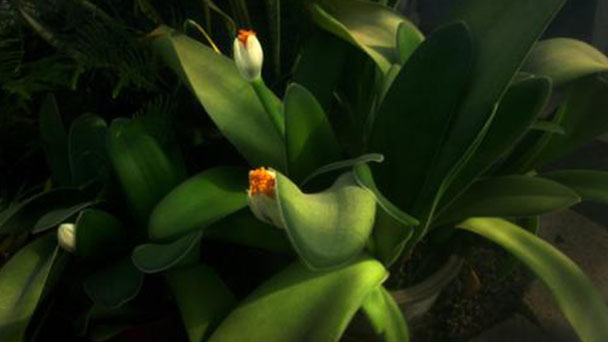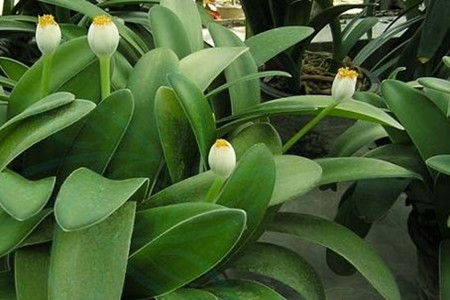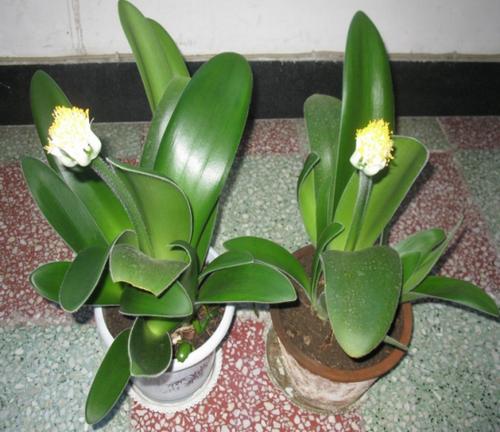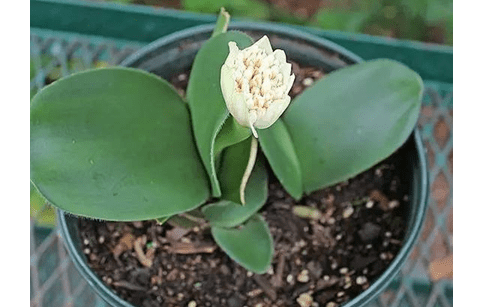How to Care for Haemanthus Albiflos
Written by Maggie
Dec 03 2021

Haemanthus albiflos, whose fleshy, evergreen leaves tip into a tongue with tiny hairs resembling tiger ears, is one of the most prominent flowers in home decor.Today, let's share how Haemanthus Albiflos is raised.

Haemanthus Albiflos Care
Best Soil for Haemanthus Albiflos
Haemanthus albiflos grows best in loose, fertile, well-drained, slightly acidic sandy loam, preferably a mixture of leaf rot, peat, and river sand.This facilitates the mobility of air and permeability of water into the soil layer, which facilitates the growth of Haemanthus albiflos.
Haemanthus Albiflos Light Requirements
Haemanthus albiflos needs good light, but keep it shaded in the summer and out of the sun the rest of the year.Do not overshade, which not only thins the leaves, but also affects the flowering and posture of the whole plant.
Temperature Care for Haemanthus Albiflos
Haemanthus albiflos grows at temperatures suitable for 16-21 ° C during the day and 10-12 ° C at night.Because haemanthus albiflos is extremely cold resistant, winter temperatures should not fall below 5 ° C, be kept indoors or in greenhouses, and keep the soil dry.
Haemanthus Albiflos Watering
During the growing season of Haemanthus albiflos, keep the pots moist and slightly dry to avoid rain. Pots should not hold water, which can cause bulb rot.Bulb rot is an infection caused by a variety of fungi and a few bacteria that causes bulb rot in flowers and crops.This causes the young stem to fail to come out or the leaves to stop growing, turn yellow to red or green, and eventually wither and even die.
Haemanthus Albiflos Fertilizer
During the growth period, NPK compound fertilizer should be applied every half moon.Promotes Haemanthus albiflos growth and reduces pests and diseases.

Haemanthus Albiflos Propagation
Haemanthus albiflos can be used to breed new plants by splicing and cutting.Individual plant propagation can be carried out all year round, but spring and autumn are preferred. Cuttage propagation can be carried out in spring and summer, rapid propagation, and a higher survival rate.
Haemanthus Albiflos Care Tips
1. Haemanthus albiflos should apply 15 {bf} cake and water every half a month, and apply compound fertilizer twice before flowering.
2, We should pay special attention in the rainy season. Haemanthus albiflos should be placed in the rain shelter.
3. Insufficient light or high soil humidity can cause Haemanthus albiflos branches and leaves to grow extremely large, resulting in drooping leaves and reduced ornamental value.
4. Haemanthus albiflos is not very cold resistant. In early winter, it should be moved indoors and placed in a sunny place where the temperature should not be lower than 0℃ to survive the winter.

Latest Updated
- Benefits of Bugleweed - 7 Science-backed Health Benefits
- Bugleweed Dangers & Side Effects - Is It Poisonous?
- How to Plant Evergreen Trees - What You Should Know
- When to Plant Evergreens - Grow Guide for Evergreen Trees
- 12 Wonderful Evergreen Shrubs for Your Garden
- 12 Popular Evergreen Plants with Pictures for Beginners
- When And How To Prune A Lilac Bush Like a Pro
- How to Grow & Care for Lilac Vine (Hardenbergia Violacea)
- Japanese Lilac Tree (Syringa Reticulata) Care & Propagation Guide
- Shumard Oak Pros and Cons - What to Know
Popular Articles
- Winter maintenance of Antirrhinum Majus
- How to Grow Terminalia Mantaly Tree
- How to Grow and Care for Crossostephium Chinense
- How to grow Antirrhinum Majus in spring
- Peristeria Elata (Dove Orchid) Profile: Info & Care Guide
- Underwatered Snake Plant (Sansevieria Trifasciata) - Signs And How To Fix
- How to Care for Brazilian Jasmine Plant (Mandevilla Sanderi)
- How to Grow & Care for Graptopetalum Purple Delight in Summer
- Rosa Chinensis (China Rose): Plant Growing & Care Tips
- How to Care for Baby Sun Rose (Aptenia Cordifolia)